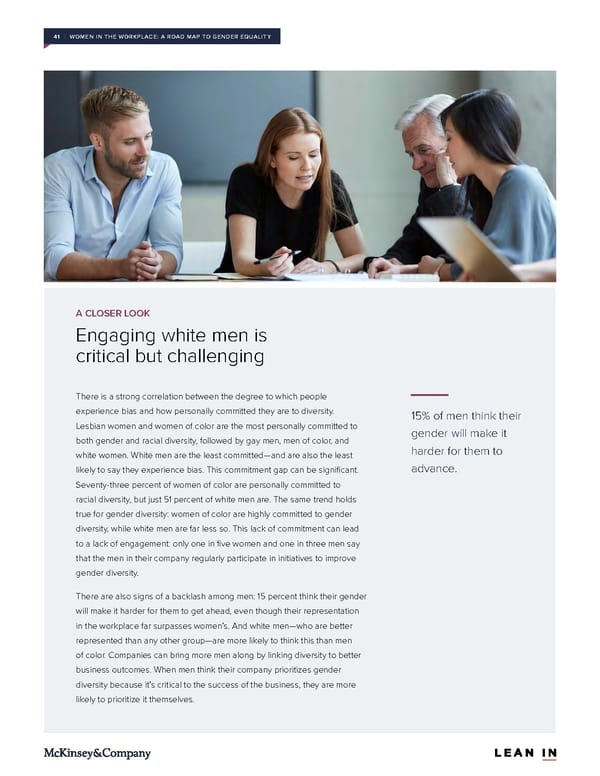41 | WOMEN IN THE WORKPLACE: A ROAD MAP TO GENDER EQUALITY A CLOSER LOOK Engaging white men is critical but challenging There is a strong correlation between the degree to which people experience bias and how personally committed they are to diversity. 15% of men think their Lesbian women and women of color are the most personally committed to gender will make it both gender and racial diversity, followed by gay men, men of color, and white women. White men are the least committed—and are also the least harder for them to likely to say they experience bias. This commitment gap can be significant. advance. Seventy-three percent of women of color are personally committed to racial diversity, but just 51 percent of white men are. The same trend holds true for gender diversity: women of color are highly committed to gender diversity, while white men are far less so. This lack of commitment can lead to a lack of engagement: only one in five women and one in three men say that the men in their company regularly participate in initiatives to improve gender diversity. There are also signs of a backlash among men: 15 percent think their gender will make it harder for them to get ahead, even though their representation in the workplace far surpasses women’s. And white men—who are better represented than any other group—are more likely to think this than men of color. Companies can bring more men along by linking diversity to better business outcomes. When men think their company prioritizes gender diversity because it’s critical to the success of the business, they are more likely to prioritize it themselves.
 Women in the Workplace Page 47 Page 49
Women in the Workplace Page 47 Page 49